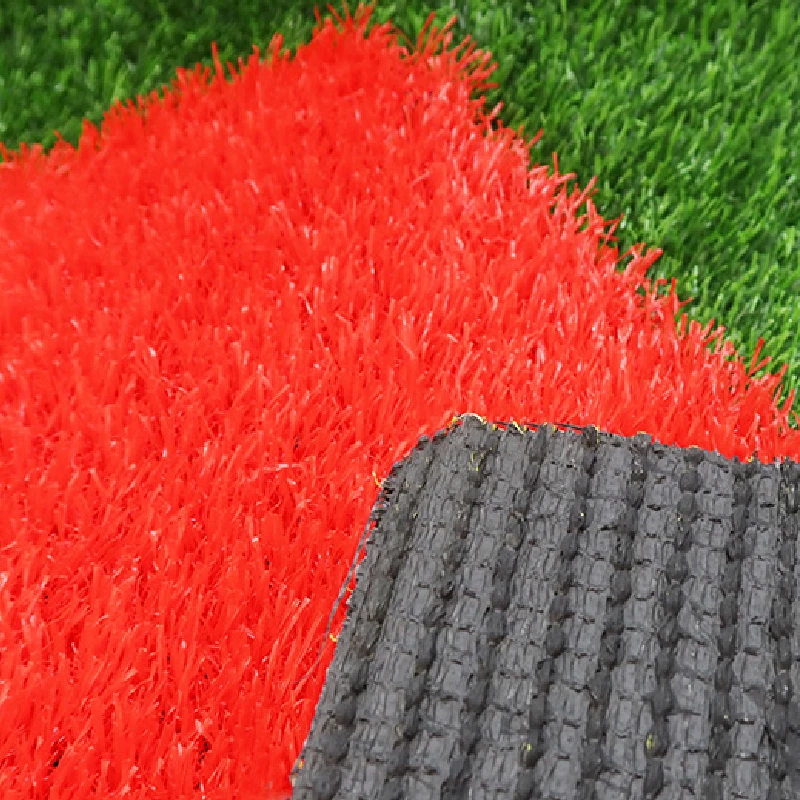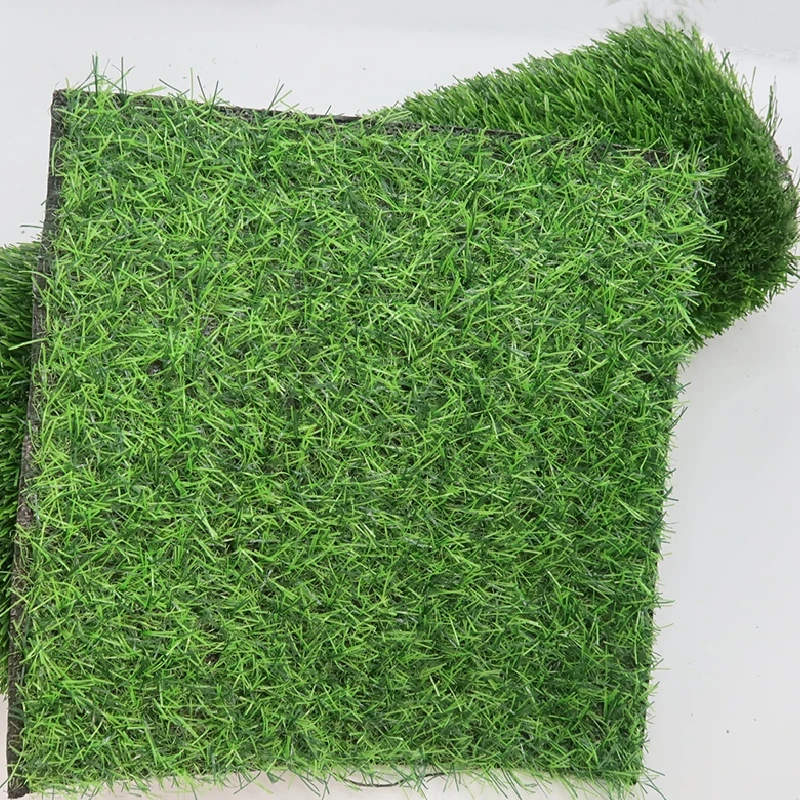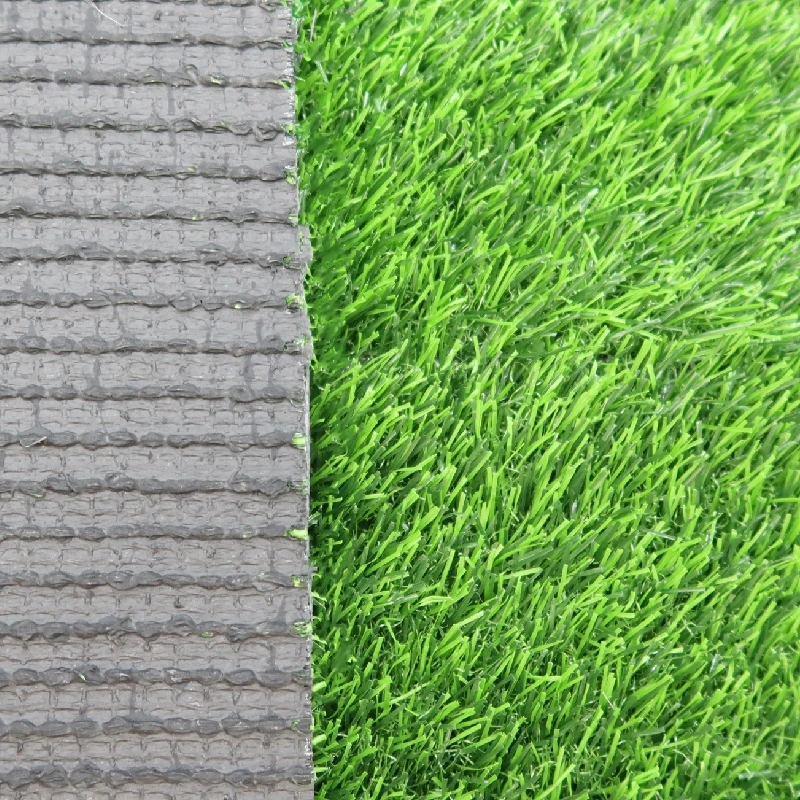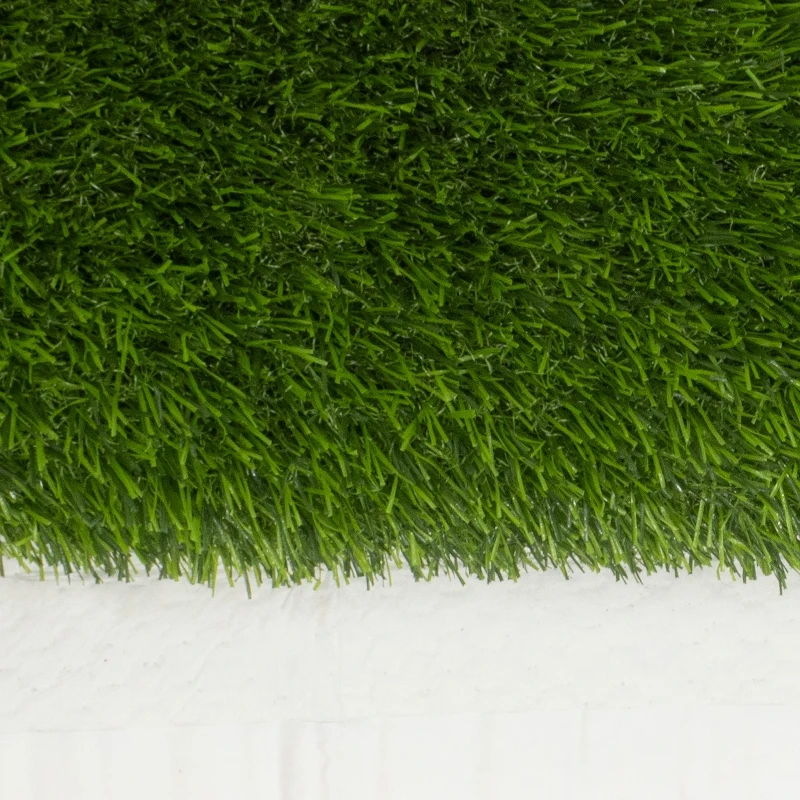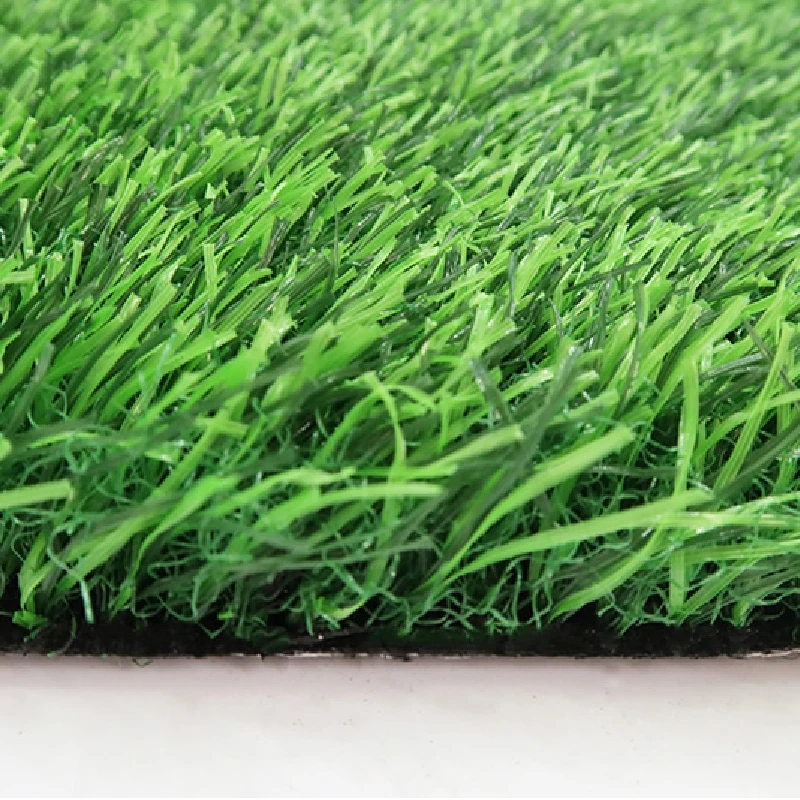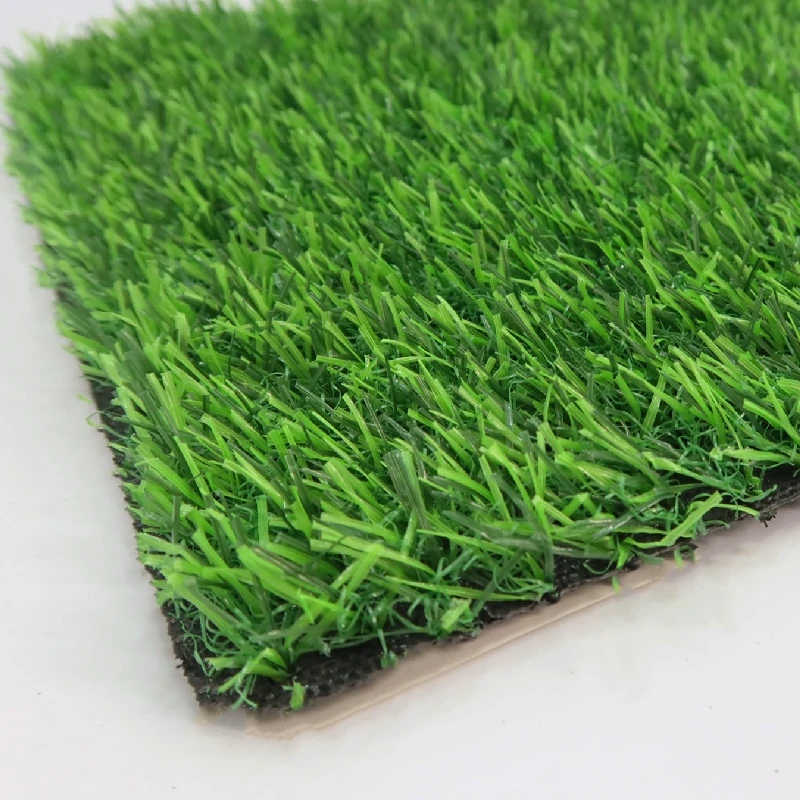Synthetic Grass Backyard Solutions: Benefits, Trends & Comparisons
Nov . 20, 2025 13:24 Back to list
Synthetic Grass Backyard: A Smart Alternative for Modern Landscaping
When you picture a backyard, lush green grass often springs to mind. But increasingly, homeowners and businesses alike are turning to synthetic grass backyard solutions as a practical and sustainable alternative. Why does this matter beyond just domestic curb appeal? Because around the world, water conservation, maintenance costs, and climate adaptability are forcing us to rethink traditional lawns. Synthetic turf offers a smart answer balancing aesthetics, durability, and eco-consciousness — but there’s more beneath the surface worth exploring.
Introduction: Why Synthetic Grass Backyard Matters Globally
Globally, urban green spaces face mounting pressures. According to UN sustainable development goals, preserving water resources and reducing chemical usage are critical. Traditional grass lawns consume approximately 50% of residential water use in some regions (EPA estimates) which isn’t viable given growing drought concerns in parts of the US, Australia, and Mediterranean countries.
Additionally, maintenance costs and environmental impacts of fertilizers and pesticides call for greener, low-maintenance solutions. Synthetic grass backyards serve as an intersection of technology and environmental stewardship — allowing lush greenery with fewer resources. But even beyond that, they impact urban heat islands, accessibility, and community aesthetics.
Mini takeaway: Synthetic turf isn’t just a pretty face; it addresses global resource scarcity and climate challenges without sacrificing green space.
Definition & Meaning: What Exactly Is a Synthetic Grass Backyard?
Put simply, a synthetic grass backyard replaces traditional soil and natural grass with manufactured turf made from plastic fibers designed to look and feel like real grass. It’s mostly polyethylene or nylon-based, sometimes with sand or rubber infill for added cushioning and durability.
Initially popularized by sports arenas, these artificial surfaces have found new relevance in residential landscaping, commercial properties, and public parks. Modern variants have improved dramatically in texture and safety, mimicking natural lawns closely without the muddy mess or patchy wear.
Industrially, it connects directly with sustainability goals, water-saving mandates, and urban planning — providing a reliable surface that is drought-resistant and allergy-friendly. It also caters to humanitarian needs where maintaining real grass is impossible, such as refugee camps or arid regions.
Key Factors Shaping Synthetic Grass Backyard Solutions
Durability & Material Quality
A high-grade synthetic backyard turf can last 10–20 years or more with minimal degradation even under heavy foot traffic and harsh weather. UV stabilizers keep fibers vibrant, while engineered infills reduce wear. Product lifecycles vary significantly — cheaper options might fade, mat down, or even fade in less than 5 years.
Water & Environmental Efficiency
Using synthetic grass virtually eliminates watering needs, drastically cutting household water usage. Also, no fertilizers or pesticides are required, reducing toxic runoff into ecosystems — great news for compliance with ISO environmental standards (ISO 14000 series).
Cost Efficiency Over Time
While initial installation costs (roughly $5–$15 per sq.ft.) can be higher than seeding or sodding, maintenance plummets. No mowing, reseeding, or watering bills — plus fewer landscaping services needed. In drought-prone areas, this can mean significant savings over a lawn’s life.
Safety & Comfort
Modern synthetic backyards consider heat retention (helpful with infill technology) and non-toxic materials to ensure children and pets can play safely. Some products include antimicrobial treatments to minimize bacterial growth.
Customization & Appearance
Varied blade lengths, shades of green, and density options let homeowners tailor their synthetic grass backyard to their aesthetic and functional needs. Some turf mimics clover or wildflower mixed lawns for a different look.
Mini takeaway: Quality materials and smart installation are key — it’s not just ‘green carpet’ but a technically intricate product.
Global Applications & Use Cases
- Residential Landscaping: Homeowners leverage synthetic grass backyards to create low-maintenance, evergreen spaces especially where water restrictions are tight.
- Commercial Zones: Businesses and golf courses use it for aesthetic consistency and reduced maintenance.
- Developing & Arid Regions: NGOs implement turf in refugee camps or arid zones where growing natural grass is impractical.
- Sports & Recreation: While known for stadiums, synthetic grass is used in smaller public parks, urban playgrounds, and rooftop gardens.
- Event & Exhibition Spaces: Temporary synthetic turf offers a quick green backdrop with no cleanup.
For example, a community project in Dubai partially replaced natural desert landscaping with synthetic grass backyard solutions, achieving notable water savings without sacrificing urban greenery. Similarly, cities facing drought have adopted turf for public spaces, balancing public use and sustainability.
Advantages & Long-Term Value
- Water Conservation: Saves thousands of gallons per year per household.
- Reduced Maintenance: No mowing, fertilizing, or edging, freeing up time and money.
- Allergy Friendly: No pollen or dust from grass blades.
- Year-Round Aesthetics: Always green regardless of season or weather.
- Environmental Impact: Limits use of chemicals and lowers carbon footprint related to lawn care equipment.
- Improved Safety: Even surfaces with cushioning create safer play areas for kids and pets.
There’s also an emotional value — feeling connected to a lush green lawn without guilt over wasted resources or endless yard work. It’s an investment in a sustainable lifestyle and neighborhood quality of life.
Product Specification Table
| Feature | Typical Spec | Benefit |
|---|---|---|
| Material | Polyethylene with UV resistance | Durable & colorfast |
| Pile Height | 30–40 mm | Natural grass look & feel |
| Infill | Rubber or silica sand | Cushioning & stability |
| Lifespan | 10–20 years | Long-term investment |
| Water Usage | Near zero post-install | Saves water resources |
Vendor Comparison: Popular Synthetic Grass Suppliers
| Vendor | Material Quality | Price Range (per sq.ft.) | Warranty | Customization |
|---|---|---|---|---|
| EcoTurf | Premium polyethylene, UV stabilized | $8–14 | 15 years | Multiple blade lengths & colors |
| GreenLawn Solutions | Mid-grade nylon blend | $5–10 | 10 years | Standard green shades |
| SyntheticScape | Advanced polyethylene with antimicrobial | $10–15 | 20 years | Custom turf patterns & infills |
Future Trends & Innovations in Synthetic Grass Backyard
The future looks exciting. Innovations include integrating sustainable recycled materials, improving cooling technology to reduce surface temperatures (think solar-reflective coatings), and smart turf embedding sensors to monitor wear and moisture levels.
On the regulatory front, policies might push for synthetic turf that’s 100% recyclable or biodegradable — aligning with circular economy principles. Also, automation in installation (robotic laying) and AI-driven customization tools for consumers are beginning to emerge.
Challenges & Solutions When Installing Synthetic Grass Backyard Systems
There are still bumps to the road. Heat retention during summer can make synthetic turf uncomfortable — but newer infill technologies and shaded installations help mitigate this. Another concern is microplastic runoff; companies experimenting with natural or hybrid infills to reduce environmental impact.
Drainage also matters. Poor installation can lead to water pooling. Hiring skilled installers and using proper base layers are essential. Additionally, some buyers worry about upfront costs, but flexible financing and leasing options are becoming more common.
FAQ: Frequently Asked Questions About Synthetic Grass Backyard
- Q: How long does synthetic grass typically last in a backyard?
A: Most quality synthetic turf products last between 10 to 20 years with adequate care. UV stabilizers and quality infills enhance durability. - Q: Is synthetic grass backyard safe for kids and pets?
A: Yes, modern turf includes non-toxic materials and antimicrobial treatments, ensuring safe play areas. - Q: Does synthetic grass require special maintenance?
A: Maintenance is minimal—occasional brushing and rinsing to remove debris are usually enough. - Q: Can synthetic grass help with allergy concerns?
A: Absolutely. Synthetic turf doesn’t produce pollen or harbor insects as natural grasses might. - Q: How eco-friendly is synthetic grass compared to natural lawns?
A: While manufacturing involves plastics, synthetic grass saves vast amounts of water and chemicals, often resulting in a lower total environmental footprint over time.
Conclusion
Synthetic grass backyard solutions merge technology, sustainability, and practicality in a way that feels almost like magic — no grass stains, no weekly mowing, and some serious water savings. For homeowners looking to marry beauty and responsibility, it’s fast becoming the go-to choice. And with ongoing improvements, the future turf looks greener and smarter than ever.
Curious to take the leap? Check out synthetic grass backyard options that suit your needs and surroundings — and say hello to a hassle-free green space.
References
-
Durable, Eco-Friendly Turf for Balcony | Enhance Your Urban Space
NewsNov.24,2025
-
Turf Between Pavers: Sustainable Green Paving Solutions for Modern Urban Spaces
NewsNov.24,2025
-
Discover the Benefits of Turf and Pavers Backyard | Sustainable Outdoor Design
NewsNov.24,2025
-
Top Quality Artificial Grass – Sustainable, Durable, and Stylish Turf Solutions
NewsNov.24,2025
-
Durable and Eco-Friendly Thick Artificial Grass Solutions | Hoya Grass
NewsNov.24,2025
-
Synthetic Turf: Sustainable Green Solutions for Sports, Industry & Urban Living
NewsNov.24,2025
Products categories



